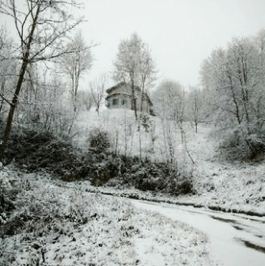
Ivan Provenzale, born 1982. I’m into design, stories, and ultra trail running.
Former frog, Fjord, (design director at) MING Labs. I’ve called home Milano, Venezia, Berlin, Istanbul, München, Praha, Amsterdam, NYC.
In 2019, disenchanted with the superficiality of the (digital) design industry, I quit my agency career and moved to an abandoned valley in NE Italy. I picked the mountains as we depend on their ecosystems to survive 1. Moreover, they are a unique environment to stay healthy, foster reflection, and boost creativity. Today, frankly, it feels like the most normal choice I’ve made in the frenzy.
I think of my days here as continuous research on how design could help fragile contexts. With this in mind:
. I do (service and) systemic design work, plus mentoring, with selected partners;
. I’ve started a collective working at the intersection of future foresight, landscaping, architecture, and services for local communities – with a focus on rural and mountain areas;
. I’ve co-founded a non-profit working on a 2041 scenario for the tiny valley I live in;
. I serve as a Councillor for Environment, Landscape, and Transition in my mountain county government; and I’m the appointed representative for the Silisia valley;
. sometimes, I share notes and have talks.
1 FAO & UNEP, Restoring mountain ecosystems, 2023
My home base
The Silisia valley is a protected area, a UNESCO World Heritage Site, in the Friulan Dolomites, Bioregion Alps. As an unfrequented territory until the Middle Ages, abundant in natural resources, it started attracting an increasing number of people by the end of the 16th century. Population overshoot and unregulated exploitation led to an extreme impoverishment of the area. Things spiraled down until mid of last century when a portion of the valley was submerged by a hydroelectric reservoir. Geographies were erased and the resisting community dispersed.



Today, the upper valley is uninhabited. Flooded villages occasionally re-emerge, and the dry, abandoned ones are gradually overgrown by vegetation. This area is home to a unique flower in Italy: the Daphne Blagayana. In the lower valley, 30 residents live with no commercial activities or any form of service -except a public bus to the flatlands.
Here is where I live, and where my volunteering effort goes: so far, I have scripted a documentary about the valley’s vicissitudes and future, launched a diffused library, reopened forgotten trails, and prompted the renovation of a former school. More recently, I’ve also been elected to represent the Silisia community in our local council.
This place is a continuous reminder of what could go wrong when we force human priorities onto nature, of how nature regains control and makes us miserable over time; but most importantly, it is a perfect lab to reflect and act differently for ecosystems to come.